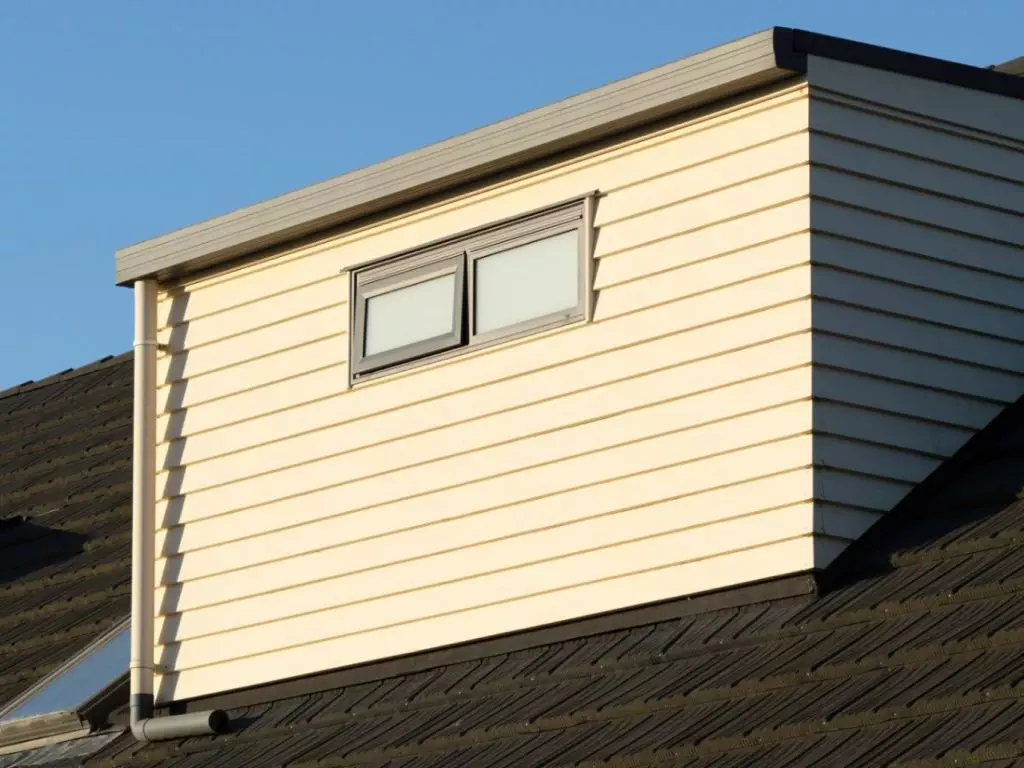When designing buildings, the acoustic performance of roof cladding is often overlooked. Sound transmission can greatly affect indoor comfort, so it’s important to choose materials and installation methods that improve sound insulation. Balancing aesthetics and function is key in creating a roof that is both visually appealing and effective at blocking out noise.

Key Takeaways
- Material density and thickness of roof cladding play a significant role in sound absorption and noise reduction.
- Sound-absorbing materials like mineral wool and acoustic foam improve the acoustic performance of roofing systems.
- Roof system designs, including air gaps, can boost sound insulation and reduce noise.
- Quality installation ensures the roof cladding works effectively to reduce noise.
- Combining good looks with acoustic performance is essential—textured surfaces can enhance both visual appeal and sound absorption.
Understanding Acoustic Performance in Building Design
When planning a building, understanding how sound moves through the structure is vital, especially for creating spaces that are comfortable to live or work in. Acoustic performance focuses on reducing sound transmission and improving noise control. To minimise sound transmission, it’s important to consider the materials used in the building and how dense they are, as denser materials tend to absorb sound better. Concrete and acoustic panels are examples of high-density materials that help reduce noise.
Another effective strategy is incorporating sound barriers and optimising the layout of rooms to reduce noise. It’s also important to think about how the building will be used, as different spaces will require different levels of sound control.
Key Factors Affecting Acoustic Performance in Roof Cladding
Several factors affect how roof cladding performs acoustically. One important element is material density. Denser materials help block sound and reduce noise levels. The thickness of the cladding also plays a major role—thicker panels tend to absorb more sound energy and provide better noise reduction.
The design of the roof system is another consideration. For example, adding air gaps between layers can enhance sound insulation by disrupting sound waves. Finally, installation quality is crucial. Poor installation can lead to gaps, allowing sound to leak through, which can weaken the roof’s ability to block noise.
Materials and Techniques for Enhanced Sound Insulation
When choosing materials for roof cladding, it’s essential to consider their sound insulation properties. Using sound-absorbing materials like mineral wool or acoustic foam can effectively reduce noise transmission. These materials absorb sound waves, making the building quieter.
Insulation techniques like decoupling can also improve sound isolation. Methods such as using resilient channels or soundproof membranes can reduce vibrations and airborne noise. It’s also important to ensure that all layers of the roof fit tightly together and are properly sealed to prevent sound leaks.
By combining sound-absorbing materials with effective insulation techniques, you can create a roof system that not only reduces noise but also improves the overall comfort of the building.
Balancing Aesthetics and Acoustic Requirements
How can you balance aesthetics with acoustic performance in roof cladding?
To integrate visual appeal with effective noise reduction, it’s important to choose materials that both look good and perform well acoustically. Textured surfaces, for example, can improve sound absorption while adding depth and interest to the roof design.
Colour schemes and architectural styles should complement the surrounding environment, ensuring that the building looks attractive without sacrificing its acoustic performance. Make sure to check product specifications, particularly the Sound Transmission Class (STC) ratings, which measure how well a material blocks sound. This will help you choose a roofing material that meets both aesthetic and acoustic requirements.
Case Studies: Successful Implementation of Acoustic Solutions
Let’s take a look at a few real-life examples where acoustic solutions have been successfully incorporated into roof cladding designs.
In one commercial project, a composite roofing system was used to reduce noise transmission by 30%. The system combined sound-absorbing materials with traditional cladding to achieve this result.
In a residential project, specialised membranes were added to the roofing design, significantly improving acoustic performance without affecting the building’s aesthetics. These case studies show how selecting the right materials and design can create effective acoustic solutions, providing comfort and functionality for both commercial and residential spaces.
Frequently Asked Questions
How do roof cladding materials impact overall building acoustics?
The materials used for roof cladding directly affect the acoustics of the entire building. Denser materials tend to block sound and improve noise insulation, creating quieter spaces inside the building.
What are common sources of noise that affect roof performance?
Noise from traffic or weather events like rain and hail can affect roof performance. These external noises can interfere with the comfort of the building, making it important to choose materials and designs that minimise their impact.
Are there specific regulations for acoustic performance in roof design?
Yes, building codes often include specific acoustic requirements for roof design. These regulations help reduce noise transmission and ensure that buildings meet the standards for occupant comfort.
How can I assess the acoustic quality of existing roof cladding?
To assess the acoustic quality of an existing roof, you can measure sound insulation levels using special equipment to identify any weak points in noise reduction. This will help you determine where improvements may be needed.
What is the cost difference between acoustic and standard roof cladding?
Acoustic roof cladding usually costs more than standard options because it uses specialised materials that improve sound insulation. However, investing in acoustic cladding can greatly enhance the comfort and quietness of the building, making it worthwhile in many cases.
Conclusion
In conclusion, paying attention to acoustic performance in roof cladding is essential for creating comfortable and quiet indoor environments. By understanding key factors like material density, thickness, and installation quality, you can make informed decisions to improve noise reduction. Using sound-absorbing materials and implementing effective insulation techniques will enhance acoustic performance. Balancing these technical requirements with aesthetic considerations will help you create a roof that meets both functional and visual needs, resulting in a successful building design.


